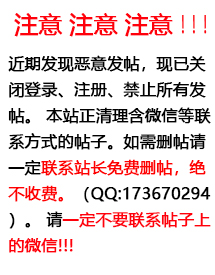


China Financial Daily:Shadow Banking Channel AUM Continued to Drop in 2Q17
Asset Management Association of China (AMAC) released 2Q17 AUM data forvarious asset manageme...



Asset Management Association of China (AMAC) released 2Q17 AUM data forvarious asset management institutions and we noticed that AUM of mutualfund subsidiaries, which is a major shadow banking channel continued todecline. Mutual fund subsidiaries’ AUM started to decline from 4Q16 afterregulators imposed tighter capital rules and was Rmb8.59trn as of 2Q17, downRmb1.32trn/13% qoq or 22% yoy. In addition, brokers’ AUM also saw aRmb674bn drop qoq in 2Q17 to Rmb18.1trn, due to less shadow bankingbusiness – brokers’ directional AMP AUM down Rmb619bn qoq toRmb15.4trn. (DB view) This is another evidence that financial deleveraging is taking effects. PBOC also reported that banks’ receivable investments (major accounting itemfor shadow credit) shrank by Rmb866bn qoq in 2Q17 to 21.36trn. Financialdeleveraging so far has already made progress by cutting off excess nonproductiveleverage, shortening the financing chains, and trimming shadowbanking (financing chain multiple dropped from 1.85x in 1Q17 to 1.01x in2Q17). Meanwhile, financial sector support to the real economy remainsresilient, as suggested by a pick-up in corporate long-term loans. We expectfinancial deleveraging to continue, resulting in elevated market rates andconsistent regulatory tightening. This should drive up NIM for big banks andboost loan growth for them, while smaller banks could be forced to slow downasset expansion due to capital and regulatory pressure. We expect China’sfinancial deleveraging campaign to be orderly before the leadership transition. Please refer to our report - Time to accumulate big banks. PBOC released its 2017 regional financial development report recently,highlighting the asset/liability mix change in regional local banks during 2012-16, and the analysis of supply-side reform. PBOC monitored local banks’financial structure by analyzing 193 banks’ financial statement, whose funding sources have diverged in the past 5 years. The weighting of deposit graduallydeclined from 73.7% in 2012 to 71.1% in 2016 as banks were keen on liftingup wholesale funding, ie interbank CDs and interbank borrowing. InterbankCDs and interbank borrowing represented 28.4% of local banks’ total liability in2016 from 22.6% in 2012. NIM narrowed in the past five years from interestrate cut and rising funding pressure post interest rate liberalization. On assetside, the usage of fund was more diversified. Local banks have allocated moreassets on interbank, non-standard investments and off balance sheet wealthmanagement products. As of 2016, loan/asset dropped by 5.5ppt from 2012,while investment/asset has increased by 13.7ppt. As a result, some banks’revenue contribution from financial market surpassed traditional retail orcorporate lending, ie 9 banks in Sichuan Province saw above 50% revenuefrom financial market in 2016. Meanwhile, local banks’ off-balance sheetWMPs also grew rapidly in 2012-16 with CAGR at 60.2%, 40.6% higher thanasset CAGR in the same period. In 2016, retail and institutional WMPsrepresented 54.6%/45.4% funding source respectively. For investment type,more than 53% off-BS WMPs were allocated to bond investment. PBOC also mentioned supply-side reform has achieved short-term target. In2016, coal and steel industry cut 290mn ton/65mn ton capacity respectively. In2017, 26 coal mines were closed and c11.3mn ton low-quality capacity wascut. For cement industry, around 50mn ton capacity was cut in 2015-16;industry centralization has been lifted up by 5ppt in 2016 via merger andacquisition. For shipbuilding, industry centralization also increased by 3.5ppt in2016; orders to top 10 players accounted for 74.7% national orders, up 4.1pptyoy. As of end-2016, financial institutions’ on- and off-BS lending exposure tosteel, coal industries declined by 2.2%/0.6% yoy respectively; meanwhile, theNPL ratios of steel/coal were at 2.6%/3.6% in 2016. Utilization rate in steel,alumni and cement came at 71.2%/83.3%/75.2% in 2016, up 4.2/4.9/1.4pptyoy. Furthermore, PBOC said in the report that it may consider to includesystematic important internet finance products/institutions into MPAregulation.
声明:如本站内容不慎侵犯了您的权益,请联系邮箱:wangshiyuan@epins.cn 我们将迅速删除。
 热词推荐
热词推荐
MORE+
- 1参股公司在赞比亚拥有1640万吨铜钴渣堆矿资源(合纵科技300477)
- 2省长一行先后参观了厚普股份企业展厅和数字化智能制造车间,听取了公司氢能业务发展介(厚普股份300471)
- 3华字辈中的低价股~多高看一眼(华联股份000882)
- 4长园集团无趣(长园集团600525)
- 5中天科技今天又迎来了难得的日线回调,有人敢买吗?相信很多人不敢买,都怕转跌,都怕(中天科技600522)
- 6首先祝女性朋友“三八节”快乐!写帖前先来回顾一下说客昨帖之预判:还是那句话:现阶(中天科技600522)
- 7炒股只能追随风口,不能太理性,追本溯源人都离不开水和粮食,但,这些股并不(中天科技600522)
- 8中天今天很明显就是借大盘下跌洗盘,尽管大盘收红了,中天也依旧在深水下,主力就是不(中天科技600522)
- 9中天科技在未收盘站上5日线或未阳包阴前暂且只能当下跌趋势对待,维持昨帖之认知,建(中天科技600522)
- 10周一策略:1、2~4个点以下低开,开局就进,等待盘中急拉红4个点左右离场。2、低(中发科技600520)
- 11上周五满仓文一科技,不是没有道理。(中发科技600520)
- 12中发科技它来了(中发科技600520)
- 134月26日收评:A股三大指数今日集体大涨,上涨股票接近4000只,成交量直接爆发(商络电子300975)
- 14现在很多人说茅台酒有金融属性是硬通货,这纯属扯蛋,房产的经融属性不比茅台更强,你(贵州茅台600519)
- 15工行,石油,市值前三争夺战难解难分,今天工行奋力直追,又把石油打败了,想当大王谈(中国移动600941)
- 16贵州茅台最高涨幅3000倍+,价值投资者的福音,10年一遇,下个贵州茅台已产生!(贵州茅台600519)
- 17康美按时发布了年报,标准无保留,随时摘帽(康美药业600518)
- 18我认为我今天的抄底就是一个错误,就算当时在2.02卖了加上手续费我也只是亏个10(康美药业600518)
- 19你们可真是太操心,海南机场又不给你发工资,就哪点股票够精神损失费嘛,我给大家科普(海航基础600515)
- 20今年,海南将锚定封关运作这个目标开展攻坚行动(海航基础600515)
- 21清明假期海南接待游客153.10万人次旅游总收入19.3亿元记者从海南省旅游和文(海航基础600515)
- 22简谈几点感受,在外出差,没在电脑旁,简单写几句吧,欢迎大咖补充:1.03年利润4(天富能源600509)
- 23转让至中新建电力集团,转让价格为7.3元/股,合计约33.71亿元。(天富能源600509)
- 24方威指出,2023年钢铁行业不好,但通过全体员工的共同努力,四家钢厂都盈利了,其(方大特钢600507)
- 25我来分析一下方大特钢吧昨天卖出的人是不理性的怎么说呢,首先方大是属于特钢并不是地(方大特钢600507)
- 26蛮厉害的,小弟,大学时期就进军金融市场,多历练历练!虽不知道你学习的是什(长白山603099)
- 27鹏欣资源索赔案:这次不是“飞”得太高,是“摔”得太狠!(鹏欣资源600490)
- 28中金黄金226万吨露天开采矿山铜价创18年历史新高↑[上涨][上涨]二度季赚大了(中金黄金600489)
- 29中金黄金特大利好来了:内蒙古矿业五十七万吨钼矿钼价近期飙升11%↑[上涨][上涨(中金黄金600489)
- 30中金黄金在美盘上称为皇家黄金喔[上涨]↑[上涨][上涨][上涨][上涨][上涨](中金黄金600489)
- 上海贝岭股吧
- 浙大网新股吧
- 华东科技股吧
- 隧道股份股吧
- 深赛格股吧
- 光大银行股吧
- 中国银行股吧
- 永鼎股份股吧
- 苏州高新股吧
- 新安股份股吧
- 精达股份股吧
- 中国医药股吧
- 东风科技股吧
- 金健米业股吧
- 西部资源股吧
- 招商银行股吧
- 中联重科股吧
- 中国宝安股吧
- 中集集团股吧
- 德赛电池股吧
- 复星医药股吧
- 宇通客车股吧
- 中国建筑股吧
- 葛洲坝股吧
- 大唐电信股吧
- 华丽家族股吧
- 罗牛山股吧
- 中色股份股吧
- 京东方A股吧
- 新疆天业股吧
- 天坛生物股吧
- 抚顺特钢股吧
- 锦龙股份股吧
- 云天化股吧
- 振华科技股吧
- 国中水务股吧
- 华发股份股吧
- 飞乐音响股吧
- 青岛双星股吧
- 中国核电股吧
- 中国中铁股吧
- 西部矿业股吧
- 时代新材股吧
- 科达股份股吧
- 士兰微股吧
- 浦发银行股吧
- 中金黄金股吧
- 哈投股份股吧
- 航天晨光股吧
- 同仁堂股吧
- 维维股份股吧
- 福耀玻璃股吧
- 新五丰股吧
- 中航资本股吧
- 中金岭南股吧
- 丰原药业股吧
- 四环生物股吧
- 哈药股份股吧
- 万向钱潮股吧
- 中国高科股吧


